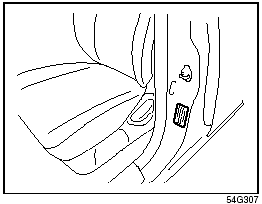Vehicle Loading

Vehicle Loading
Your vehicle was designed for specific weight capacities. The weight capacities of your vehicle are indicated by the Gross Vehicle Weight Rating (GVWR), the Gross Axle Weight Rating (GAWR, front and rear) and the Vehicle Capacity Weight. The GVWR and GAWR (front and rear) are listed on the Safety Certification Label which is located below the driver’s side door latch striker. The Vehicle Capacity Weight is listed on the Tire Information Label which is located below the Safety Certification Label.
GVWR – Maximum permissible overall weight of the fully loaded vehicle (including all the occupants, accessories and cargo plus the trailer tongue weight if towing a trailer).
GAWR – (Front and Rear) Maximum permissible weight on an individual axle.
Vehicle Capacity Weight – Maximum permissible load weight a vehicle can carry including the weight of all the occupants, accessories, cargo, plus trailer tongue weight (if towing a trailer).
The weight of any accessories already installed on your vehicle at the time of purchase, or that you or the dealer install after purchase, must be subtracted from the Vehicle Capacity Weight to determine how much capacity remains available for occupants, cargo, and trailer tongue weight (if towing a trailer).
Contact your dealer for further information.
Actual weight of the loaded vehicle and actual loads at the front and rear axles can only be determined by weighing the vehicle using a vehicle scale. To measure the weight and load, try taking your vehicle to a highway weighing station, shipping company or inspection station for trucks, etc.
Compare these weights to the GVWR and GAWR (front and rear) listed on the Safety Certification Label. If the gross vehicle weight or the load on either axle exceeds these ratings, you must remove enough weight to bring the load down to the rated capacity.
 WARNING:
WARNING:
Never overload your vehicle. The
gross vehicle weight (sum of the
weights of the loaded vehicle, driver
and passengers) must never exceed
the Gross Vehicle Weight Rating
(GVWR) listed on the Safety Certification
Label. In addition, never distribute
a load so that the weight on either
the front or rear axle exceeds the
Gross Axle Weight Rating (GAWR)
listed on the Safety Certification
Label.
 WARNING:
WARNING:
• Always distribute cargo evenly.
• To avoid personal injury or damage to your vehicle, always secure cargo to prevent it from shifting if the vehicle moves suddenly.
• Place heavier objects on the floor and as far forward in the cargo area as possible. Never pile cargo higher than the top of the seat backs.
See also:
Exhaust Gas Warning
WARNING:
Avoid breathing exhaust gases.
Exhaust gases contain carbon monoxide,
a potentially lethal gas that is
colorless and odorless. Since carbon
monoxide is difficult to detect by
itself, ...
2008 Suzuki Grand Vitara review By Steven Cole Smith
The market for small sport utility vehicles is among the toughest in the
automotive world: So many good products, but only so many buyers. What's a
little manufacturer like Suzuki to do?
Offer g ...
Shopping Hook (if equipped)
Shopping Hook (if equipped)
The shopping hooks are located on both
sides of the luggage compartment.
You can hang the shopping bag or other
suitable objects on the hook. This hook is
not design ...
